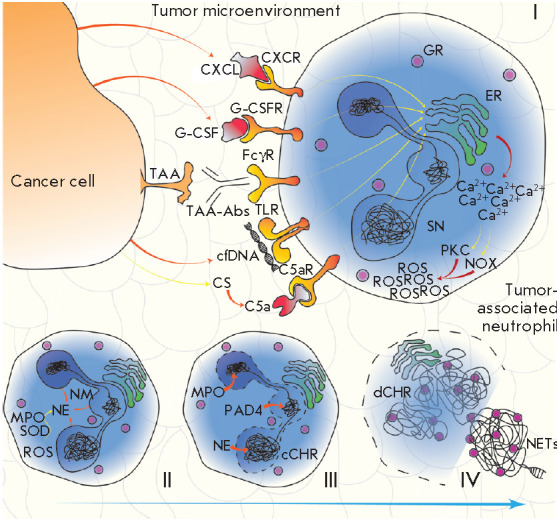Fig. 1.

The signaling pathway of NOX-dependent NETosis. Various cancer-associated stimuli increase the cytoplasmic Ca2+ concentration in TANs, which results in the activation of PKC and NOX and, therefore, leads to intracellular production of ROS (I). As SOD and MPO interact, ROS are converted into HClO, leading to the activation of NE (II). NE promotes NM degradation, and then PAD4, MPO, and NE ensure chromatin decondensation and its mixing with cytoplasmic granules (III); the resulting mixture (in the form of NETs) is released into the extracellular space during NETosis (IV). Abbreviations: TAA – tumor-associated antigen; cfDNA – cell-free DNA; TAA-Abs – anti-TAA antibodies; FcγR – receptor for the fragment crystallizable region of IgG; TLR – toll-like receptor; CXCL – cytokine belonging to the CXC family; CXCR – CXCL receptor; ER – endoplasmic reticulum; GR – granule; G-CSF – granulocyte colony-stimulating factor; G-CSFR – G-CSF receptor; CS – complement system; C5a – complement component 5a; C5aR – C5a receptor; SN – segmented nucleus; NM – nuclear membrane; NE – neutrophil elastase; MPO – myeloperoxidase; SOD – superoxide dismutase; ROS – reactive oxygen species; PKC – protein kinase C; NOX – NADPH oxidase; cCHR – condensed chromatin; PAD4 – protein arginine deiminase 4; dCHR – decondensed chromatin; NETs – extracellular neutrophil traps
